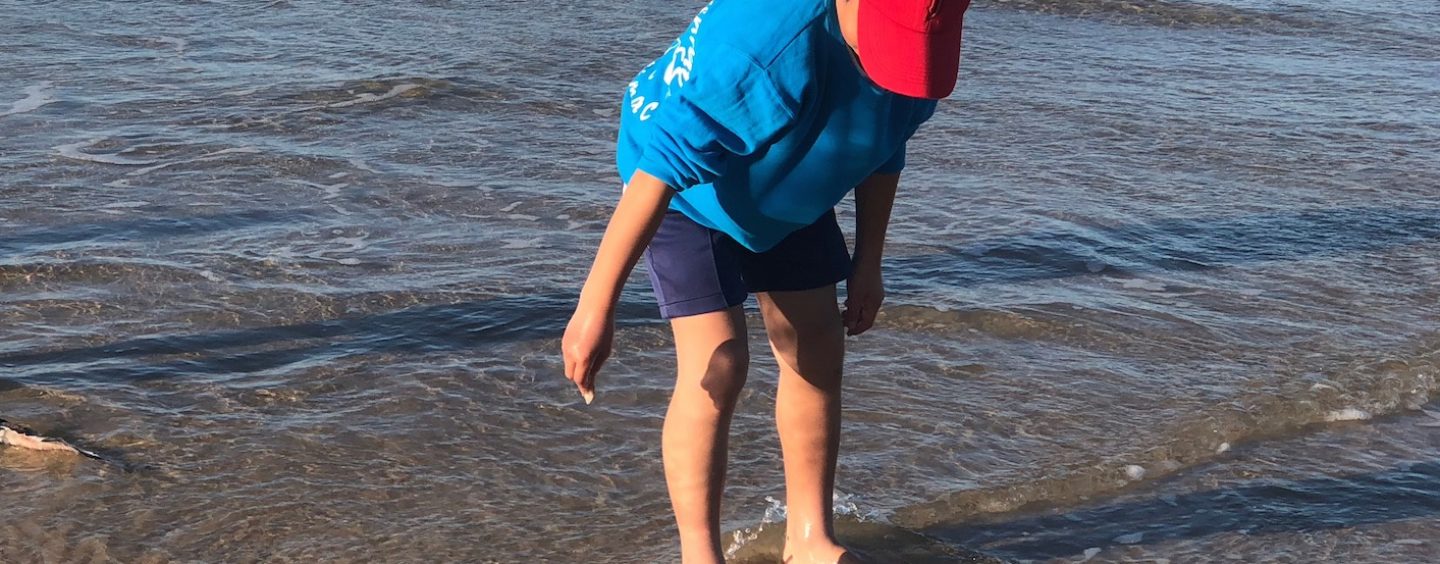There’s something about catching bait that intrigues me every time I decide to go and do it. And it all comes down to three key phases: the planning, the execution, and, of course, the end result.
Beach worming is one of those bait-catching ideas that can easily frustrate you beyond recognition, and at the same time, if done properly, reward you with one of the best baits found along the beach – all for free.
It all started for me when I was just 5 years old while visiting my Uncle John and Aunty Jennifer’s homestead on Facing Island off Gladstone. We would travel there for our annual family pilgrimage and set up camp in their old “A” frame house like Robinson Crusoe’s.
Farmer’s Point is an area that, at low tide, would drain out to the main channel between Curtis Island and Facing Island. At high tide, the water would flood over the flats, bringing all types of fish in close – and I mean all types! I recall sitting in a rowboat no bigger than 8 feet long with my older brother Doug (owner of the infamous Doug Burt’s Tackle World Store at Labrador) and rowing across the channel to a small colourful reef where we would catch every reef fish imaginable – from coral trout to parrot fish, and sweetlip to cod, and not forgetting sharks which were often bigger than the boat and all on hand lines.
The western side of the island also had its own unique ecosystem, with mangroves as tall as gumtrees and small drains that housed crocodiles, barramundi, mangrove jacks and mud crabs. Yes, the famous Queensland muddies! These crabs were so big; their claws were the size of your foot! Back then, you’d simply pick them up or pull them out of their holes using a stick.
Growing up in that arena certainly helped shape who I am today, and that is just one small part of the story. On the island, my uncle had an old beach buggy with massive tyres and a loud engine at the back that would thump this thing along at a great rate of knots. It was that very un-roadworthy vehicle that couriered us across to the surf side of Facing Island, until one day, it simply stopped working. We had to walk for what seemed like a whole day and night to a 5-year-old to get back home; in reality, it was probably an hour or two. The rock pools were my favourite place to be. At high tide, the water would fill the holes with clean ocean water. At low tide, you could lie in them like a swimming pool, noticing everything that lived in there or that was trapped in there.
My dad taught me many things, but what I learned on the beach side of Facing Island I would never forget – beach worming. We would tie together a bunch of fish frames that we had kept from the day prior onto a piece of rope, and wave them endlessly across the sand. Then we wait in anticipation for a worm to stick its head up. First, I did not quite understand what to look for. But then it came to me, and all of a sudden I could see dozens of worms lurching through the water as it receded back into the surf break. My dad and brother Doug showed me that you needed a small piece of belly flap from the fish to entice the worm out further. Then, you lean in with your index finger and thumb of your right hand, and gently place them into the sand around the worm’s head, while at the same time, feeding him that bit of off-cut belly strip with your left hand. When you can feel the worm between your thumb and index finger, slowly pull the belly strip away, causing the worm to come out further. When it arches its back – boom! – quickly squeeze your finger and thumb together and hold on tight. Trying to do it in a single motion and pull up is the best way. If you stopped for a second, the thousand plus legs of the worm would try and retract back down into the sand causing the worm to break or causing you to lose a grip on it.
There are pliers from Alvey that you can buy specifically to catch beach worms. There are people out there who use normal long nose pliers, but for me, it was learning the art of catching beach worms with my hands. When we got older, we would catch them between our toes. That’s a totally different story, and normally a trick done after a few rums.
Worms are a terrific bait, with the large king worms ideal for jewfish and big sea bream. The smaller skinny worms are perfect for dart, whiting and flathead.
I have taught both my sons to catch beach worms with their hands. I hope this tradition is one that keeps on getting handed down from generation to generation. What makes it even easier is that it only takes a few minutes to travel to a beach here on the Gold Coast.
By Paul Burt
For Department of Agriculture and Fisheries information on marine worms: http://bit.ly/2NHjBmb






























